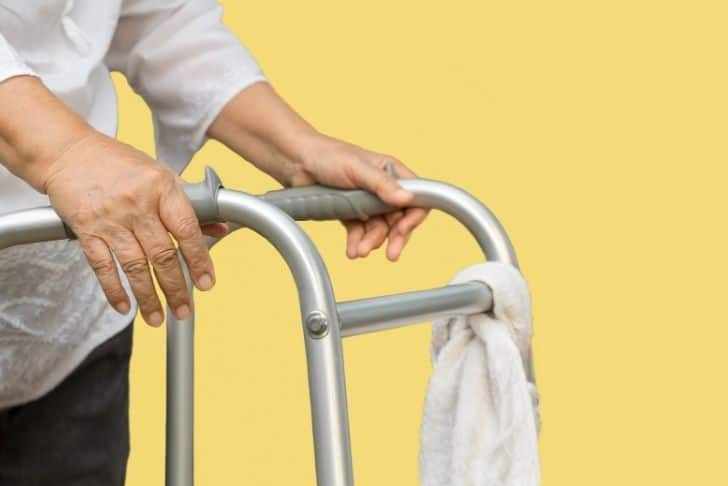If you’ve always wanted to grasp the dynamics of mobility devices, then this article is your starting point. With a comprehensive focus on basic requirements, various types of wheelchairs and manually powered devices, as well as other powered options, this piece presents a detailed outline on the numerous mobility aids available for people with disabilities. The article also provides relevant information and regulations under the Americans with Disabilities Act (ADA), including procedures for interacting with people who use these devices. Be prepared to enhance your understanding of mobility devices significantly, regardless of whether you are a device user, a family member, caregiver, or simply an interested reader.

Understanding Mobility Devices
As we go about our daily lives, ease of movement is something most of us take for granted. But for some with disabilities, mobility is a constant challenge. This is where mobility devices come in as essential aids designed to help.
Definition of Mobility Devices
Mobility devices are designed to assist people with physical disabilities or mobility impairments. These appliances help improve the freedom and independence of individuals, enabling them to carry out their day-to-day tasks more efficiently and comfortably.
Importance of Mobility Devices
Mobility devices play a crucial role in enhancing the quality of life for individuals with mobility impairments. Not only do they help navigate and access different areas, but they also help boost independence, self-esteem, and participation in various social, economic, or community activities.
Common Types of Mobility Devices
Mobility devices encompass a range of manual and powered options. These include wheelchairs (both manual and power-driven), walkers, canes, crutches, and braces. More sophisticated devices such as electronic personal assistance mobility devices (e.g., Segways®), golf carts, and all-terrain vehicles can also be used by persons with disabilities to get around.
Basic Requirements for Mobility Devices
With an array of mobility devices available today, it is essential to understand basic requirements, accommodating them in various environments effectively.
Regulations to Accommodate Mobility Devices
The use of mobility devices in public environments is regulated by state/local governments. Businesses and government facilities should allow people with disabilities using mobility devices into all areas where members of the public are allowed to go.
Accessibility Standards for Mobility Devices
In addition to legal requirements, accessibility standards play a crucial part in ensuring mobility devices can be used effectively. These standards encompass physical environment considerations like hallways width, doorways, restrooms, and ramps, to name a few.
Restrictions and Allowances of Mobility Devices
While these devices should generally be allowed in public areas, certain restrictions may apply where safety is a concern. For instance, some facilities may restrict the speed of movement, prohibit devices in specific locations, or impose conditions under which these devices may be used.
Wheelchairs and Manually Powered Devices
Wheelchairs and manual devices constitute a significant share of mobility aids, helping numerous individuals lead more independent lives.
Types of Wheelchairs
Wheelchairs can broadly be classified into two types: manual and power-driven. Manual wheelchairs require physical effort for propulsion, whereas power-driven wheelchairs are battery-operated.
Functions of Manually Powered Devices
Manually powered devices help perform a myriad of tasks. They assist in walking (canes, walkers), stabilizing the gait (crutches), or providing supplemental support (braces).
Advantages and Disadvantages of Wheelchairs and Manually Powered Devices
While these devices significantly improve mobility and independence, they also come with their set of challenges. They require physical strength and coordination, may restrict speed, and need periodic maintenance.
Other Powered Options
Besides wheelchairs and manually powered devices, there are several other powered mobility options available.
Understanding Other Powered Mobility Devices
Powered mobility devices operate on batteries, fuel, or other engines. Examples include golf carts, electronic personal assistance mobility devices like Segways®, and all-terrain vehicles.
Pros and Cons of Using Other Powered Mobility Devices
While these devices offer increased mobility, speed, and maneuverability, they also come with disadvantages. They may struggle in certain terrains, pose safety risks if not appropriately controlled, or prove costlier than manual alternatives.
Regulations for Other Powered Options
Like manual mobility devices, powered options are subject to legal regulations and safety requirements to ensure their safe and efficient operation in public spaces.

Asking Someone About Their Mobility Device
Approaching an individual about their mobility device requires tact and sensitivity to not infringe on their personal space or dignity.
Proper Etiquette When Addressing Someone with a Mobility Device
It’s important to respect the personal boundaries of individuals and refrain from asking intrusive questions unless absolutely necessary.
Protocol to Verify a Disability
By law, businesses and government entities can request “credible assurance” that a mobility device is needed due to a disability. This could be a state-issued disability parking placard, proof of disability, or a personal statement.
Rights of a Person Using a Mobility Device
Persons using mobility devices have the right to access public spaces without unwarranted questioning or discrimination. Their rights are protected by ADA regulations and other laws to ensure equal provision of services and non-discrimination in public life.
ADA Regulations for Mobility Devices
The Americans with Disabilities Act (ADA) provides crucial legal protection for individuals with disabilities, including regulations regarding mobility devices.
The Role of ADA in Promoting Accessibility
ADA regulations play a significant role in promoting the rights and accessibility of individuals with disabilities. They ensure that businesses and public spaces are equipped and adaptable to accommodate these individuals and their mobility aids.
Specific ADA Regulations for Different Mobility Devices
Different mobility devices might have different specific ADA regulations. These can pertain to size, weight, dimensions, speed, and other design aspects of the mobility devices.
ADA Standards for Businesses and Facilities with respect to Mobility Devices
ADA standards impose specific requirements on businesses and public facilities to ensure they are accessible to all, including individuals with disabilities who depend on mobility devices.

Factors to Consider in Mobility Device Usage
When considering the use of a mobility device, numerous factors need careful attention.
Size and Design of the Mobility Device
The type, size, weight, dimensions, and speed of the device are important considerations. They can influence how the device can be used and which environments are suitable.
Pedestrian Traffic and the Mobility Device
Another critical consideration is the pedestrian traffic in the facility. The presence of other people is a safety consideration and may determine how the mobility device is operated.
Safety and Environment Concerns
Additionally, safety standards must be adhered to, and potential environmental, natural, or cultural risks must be considered when using mobility devices in a given setting.
Safety Requirements for Mobility Devices
Ensuring user safety is paramount when it comes to the use of mobility devices.
Safety Standards for Mobility Devices
Designed for the user’s safety, these standards vary depending on the specific device. Factors like size, weight, speed, and adaptability form an integral part of these standards.
Condition under Which Safety Measures are Imposed
Safety measures could be imposed under different conditions like pedestrian traffic, indoor or outdoor use, furniture spacing, and storage availability.
Potential Issues with Safety Guidelines
While safety guidelines aim to minimize risks, there can be issues. For example, overly restrictive policies might limit the freedom and independence of individuals with mobility devices.
Learning More about Mobility Devices
Continuous learning about mobility devices is beneficial not only for users but also for businesses, government agencies, and the public at large.
Recommendations for In-depth Study on Mobility Devices
In-depth study on mobility devices can offer more familiarity with their use, functions, benefits, challenges, and safety aspects.
Mobility Device Guides and Resources
There are numerous resources, guides, and books that provide valuable information about different mobility devices, their use, maintenance, safety guidance, and relevant regulations.
Benefits of Learning More About Mobility Devices
Having a good understanding of mobility devices fosters empathy toward those who use them. It also helps design accessible and inclusive environments and offer better services to these individuals.
Accommodating Individuals with Mobility Devices
Accommodating mobility devices is not just about access. It’s about treating individuals with disabilities with respect and valuing their contribution to society.
Steps to Create an Inclusive Environment for Mobility Devices
Creating an inclusive environment includes things like removing physical barriers, providing reasonable modifications, offering equal opportunities, and adhering to legal demands.
Dealing with Accessibility Issues
Accessibility issues can occur in different forms like architectural barriers, administrative practices, or communication issues. Identifying and addressing these promptly is crucial.
Benefits of Accommodating Mobility Devices
Accommodating mobility devices benefits not just individuals with disabilities, but also businesses and communities at large. It fosters diversity, promotes inclusivity, and enhances equal participation in society’s vibrancy.
